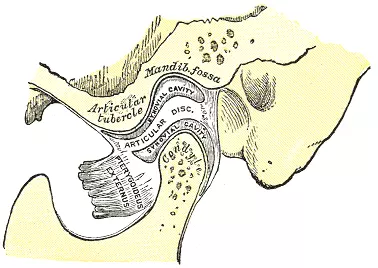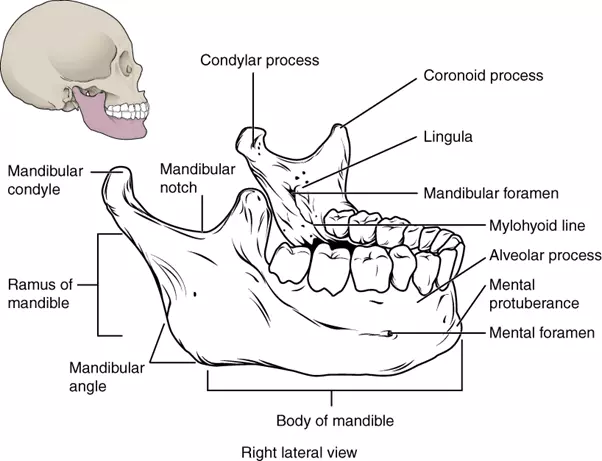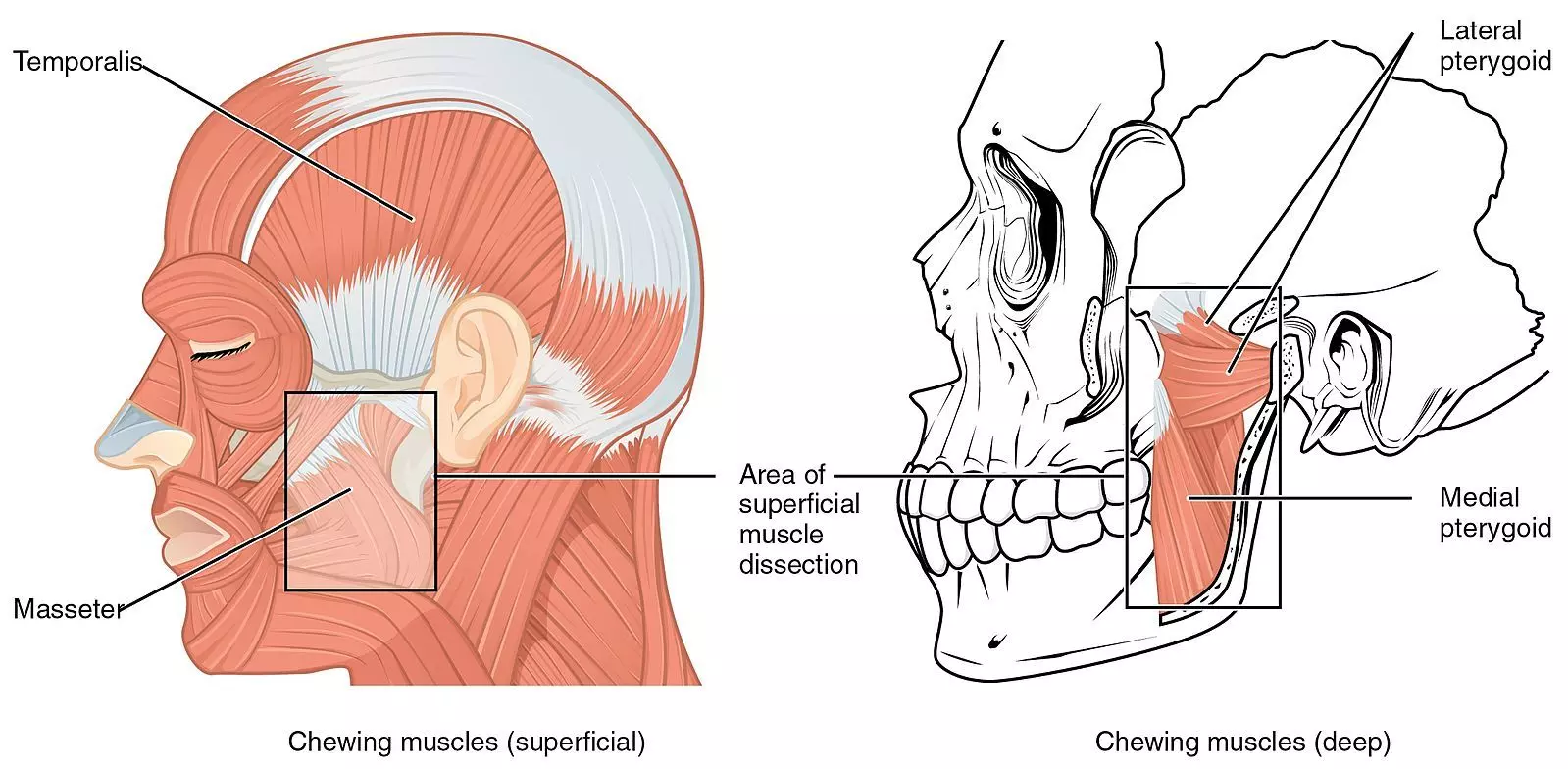By Joshua Bray
Next Lesson - The Meninges
Abstract
- The temporomandibular joint (TMJ) has three articular surfaces: the mandibular head, mandibular fossa and articular tubercle.
- The articular surfaces of the TMJ are separated by a disc of fibrocartilage.
- The TMJ is stabilised by a joint capsule and ligaments.
- The mandible has a body and two rami.
- The TMJ is capable of a range of movements, including elevation, depression, protrusion, retraction and lateral deviation.
- The muscles of mastication are innervated by CN Vc.
- The TMJ can dislocate anteriorly due to lateral trauma or yawning.
- TMJ disorder describes pain and/or stiffness of the jaw.
Core
The temporomandibular joint (TMJ) is a modified synovial joint where the mandible articulates with the temporal bone. It has three articulating surfaces: the mandibular head, mandibular fossa and articular tubercle.
The TMJ is special in that the articular surfaces do not actually come into contact with each other. Instead, they are separated by a disc of fibrocartilage. This disc separates the joint into two cavities filled with synovial fluid.

Diagram - Articular surfaces of the temporomandibular joint
Public Domain Source by Henry Gray: Gray's Anatomy (20th edition) (NIH) [Public domain]
The TMJ is stabilised by a fibrous joint capsule and three ligaments:
- Lateral Ligament – runs from the articular tubercle to the mandibular neck.
- Sphenomandibular Ligament – runs from the spine of the sphenoid to the lingula of the mandible.
- Stylomandibular Ligament – runs from the styloid process to the angle of the mandible.
The mandible has a horizontal body anteriorly and two vertical rami posteriorly.
The body is U-shaped and has two borders: the alveolar border (superior) and base (inferior). The alveolar border contains the sockets for the lower teeth. The mental protuberance is the bony prominence of the mandible in the anterior midline. Just lateral to the mental protuberance is the mental foramen, which transmits the inferior alveolar nerve and mental artery.
The body joins to the mandibular rami at the angle of the mandible.
The mandibular rami have a number of bony landmarks:
- Head – articulates at the TMJ.
- Neck – connects the head to the rest of the ramus.
- Coronoid Process – anterosuperior projection to which the masseter and temporalis muscles attach.

Diagram - Osteology of the mandible
(Note: The mandibular condyle is synonymous with the mandibular head)
Creative commons source by OpenStax College [CC BY-SA 4.0 (https://creativecommons.org/licenses/by-sa/4.0)]
The TMJ is capable of a range of movements:
- Elevation – a very strong action created by contraction of the masseter and temporalis muscles.
- Depression – mainly due to gravity. The suprahyoids can assist when there is resistance.
- Protrusion – forward movement of the jaw, created by the lateral pterygoid (assisted by the medial pterygoid).
- Retraction – backward movement of the jaw, created by the posterior fibres of temporalis.
- Lateral Deviation – produced by unilateral contraction of the lateral pterygoid.
In the initial opening (depression) of the jaw, the mandibular head articulates in a hinge-type fashion within the mandibular fossa. When opening the jaw more widely, the mandibular head must glide over the articular tubercle anteriorly.
The muscles of mastication are innervated by the mandibular division of the trigeminal nerve (CN Vc).

Diagram - The muscles of mastication
Creative commons source by OpenStax [CC BY-SA 4.0 (https://creativecommons.org/licenses/by-sa/4.0)]
TMJ dislocation can occur due to a lateral blow to the jaw or yawning. The mandibular head dislocates anteriorly over the articular tubercle and becomes locked in position. This prevents the patient from being able to close their mouth. This is worsened by a reactive contraction of the muscles of mastication. The TMJ can be reduced using a very specific technique.
TMJ disorder refers to pain and/or stiffness of the jaw. Causes include overuse, trauma and arthritis. Pain is commonly referred to the ear or may cause a headache. Patients may also experience mechanical symptoms such as clicking, locking and grinding.
Reviewed by: Thomas Burnell
- 8706

